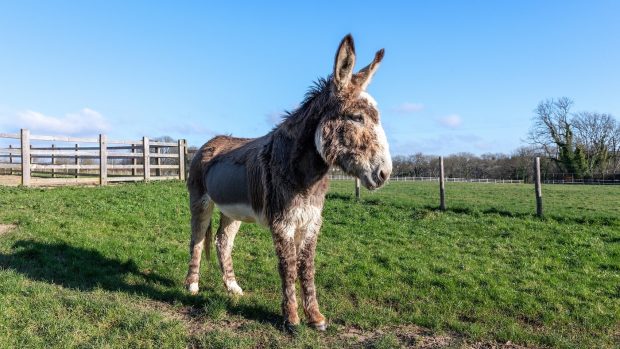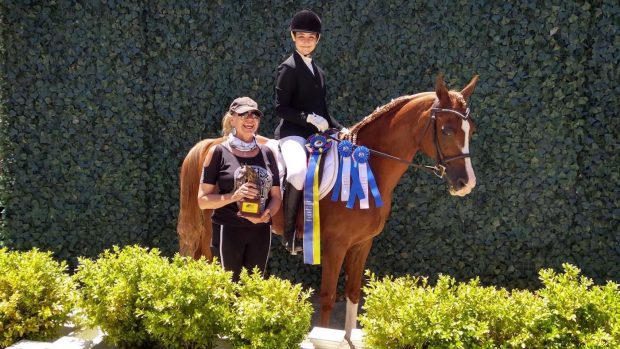Horse: Finn, 16-year-old 16hh Thoroughbred
Feeding issue: prone to colic
Owner’s thoughts: “Finn suffers with spasmodic colic brought on from an excess of starch and high-sugar content grass in the spring and autumn. It’s difficult to keep weight on and provide energy without him boiling over, while keeping his colic symptoms well controlled.”
Work schedule: ridden daily for at least 1hr. Competing at novice level in affiliated dressage, aiming to move up to elementary in the next year.
Current diet: fed ¾ scoop of unmolassed chaff, ¾ scoop working pony cubes twice daily, ½ scoop of cubes in a snack ball at lunchtime.
Suggested feed programme for horse prone to colic
Finn is currently receiving around 2kg of concentrates a day, which is not adequate for this type of horse undertaking the work asked of him. He can get unpredictable when fed a conditioning ration, so choose a product carefully. Also, take care not to exacerbate his problem with colic. Feed more than three times a day, if possible, to prevent overloading his delicate gut.
- Feed a high-fibre, low-energy ration, which includes cooked soya. This is non-heating, but should maintain weight and add top line. Slowly increase to 3kg a day.
- Alternatively, feed 2kg of high-fibre cubes and add up to 2kg of a conditioning ration, preferably cubes, which tend to contain less starch than mixes. Adjust the amount according to workload.
- Continue with unmolassed chaff. Increase levels if Finn is prone to bolting his feed.
- Slowly introduce 200g of soya oil daily.
Stomach troubles?
Limiting grass intake during spring and autumn is easy, as new-generation grazing muzzles are equine-friendly and simple to use. Turn your horse out with a muzzle for several hours morning and night. He will value the companionship of other horses, yet cannot gorge — muzzles limit, not restrict grazing, so don’t feel guilty.
- Feed ad lib clean hay rather than haylage. Hay has a neutral pH, whereas haylage can be acidic, which could upset a delicate gut.
- Molassed chaffs can contain between 15%-30% molasses and, as molasses is typically 65% sugar, the levels can mount up. Opt for an unmolassed or oiled chaff, which is easily digested. Avoid straw-based chaffs in favour of alfalfa. Slowly work up to a level of around 1kg.
- Unmolassed beet pulp is a fantastic fibre source, but do not allow it to ferment and don’t feed chilled beet pulp.
- The addition of 200g of oil daily will benefit coat and body condition and lubricate the gut.
- Take time to research herbs, which can calm the gut — but do not expect an instant response.
This feeding case study was first published in Horse & Hound’s feed special (12 October, ’06)




